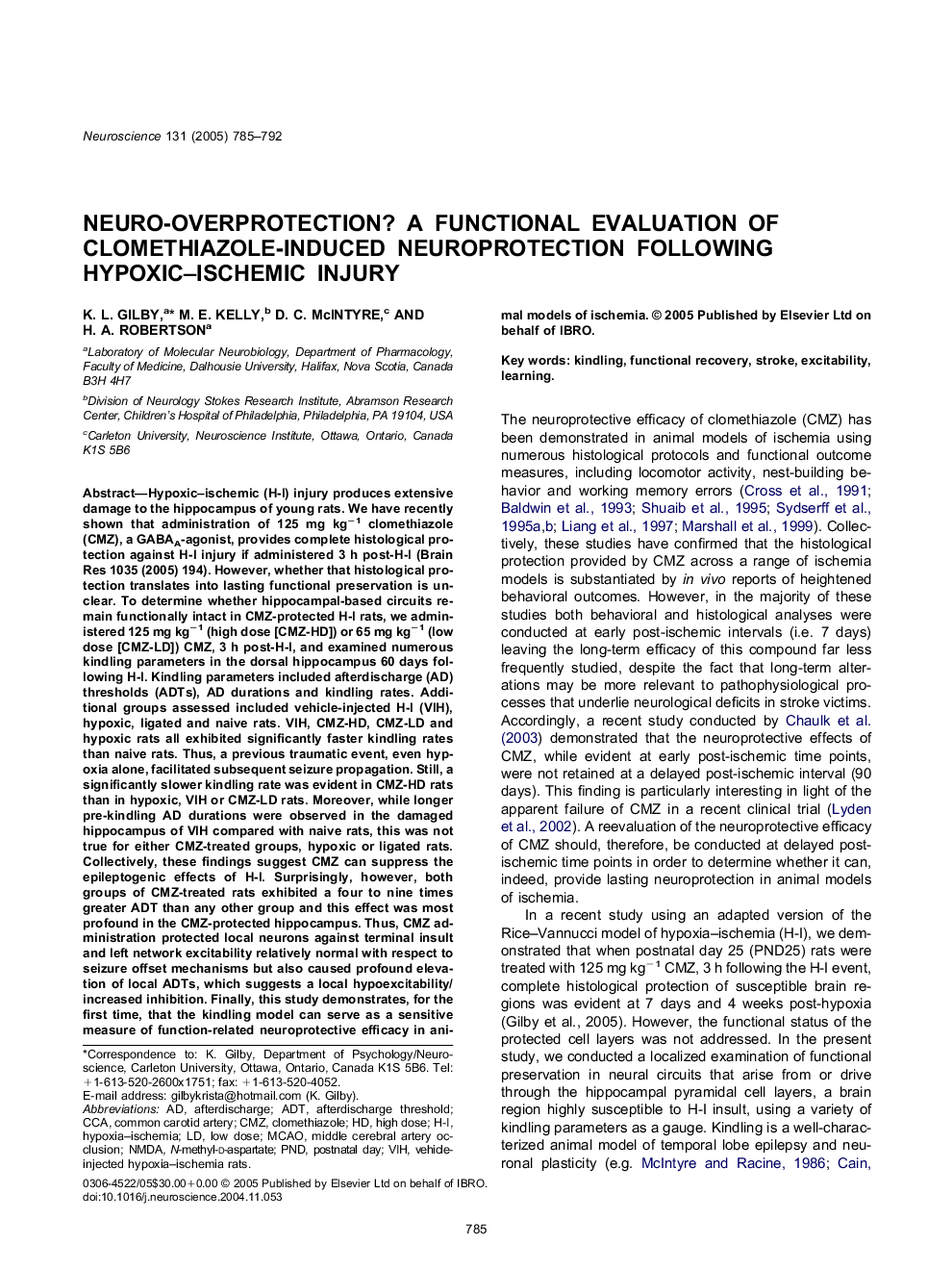| Article ID | Journal | Published Year | Pages | File Type |
|---|---|---|---|---|
| 9425504 | Neuroscience | 2005 | 8 Pages |
Abstract
Hypoxic-ischemic (H-I) injury produces extensive damage to the hippocampus of young rats. We have recently shown that administration of 125 mg kgâ1 clomethiazole (CMZ), a GABAA-agonist, provides complete histological protection against H-I injury if administered 3 h post-H-I (Brain Res 1035 (2005) 194). However, whether that histological protection translates into lasting functional preservation is unclear. To determine whether hippocampal-based circuits remain functionally intact in CMZ-protected H-I rats, we administered 125 mg kgâ1 (high dose [CMZ-HD]) or 65 mg kgâ1 (low dose [CMZ-LD]) CMZ, 3 h post-H-I, and examined numerous kindling parameters in the dorsal hippocampus 60 days following H-I. Kindling parameters included afterdischarge (AD) thresholds (ADTs), AD durations and kindling rates. Additional groups assessed included vehicle-injected H-I (VIH), hypoxic, ligated and naive rats. VIH, CMZ-HD, CMZ-LD and hypoxic rats all exhibited significantly faster kindling rates than naive rats. Thus, a previous traumatic event, even hypoxia alone, facilitated subsequent seizure propagation. Still, a significantly slower kindling rate was evident in CMZ-HD rats than in hypoxic, VIH or CMZ-LD rats. Moreover, while longer pre-kindling AD durations were observed in the damaged hippocampus of VIH compared with naive rats, this was not true for either CMZ-treated groups, hypoxic or ligated rats. Collectively, these findings suggest CMZ can suppress the epileptogenic effects of H-I. Surprisingly, however, both groups of CMZ-treated rats exhibited a four to nine times greater ADT than any other group and this effect was most profound in the CMZ-protected hippocampus. Thus, CMZ administration protected local neurons against terminal insult and left network excitability relatively normal with respect to seizure offset mechanisms but also caused profound elevation of local ADTs, which suggests a local hypoexcitability/increased inhibition. Finally, this study demonstrates, for the first time, that the kindling model can serve as a sensitive measure of function-related neuroprotective efficacy in animal models of ischemia.
Keywords
Related Topics
Life Sciences
Neuroscience
Neuroscience (General)
Authors
K.L. Gilby, M.E. Kelly, D.C. McIntyre, H.A. Robertson,
